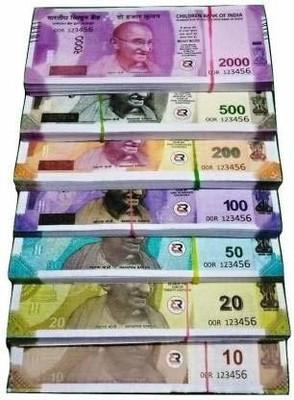

Early Bird Deals starts in03 hrs : 19 mins : 27 secs
Hariom 1740 RAMDARBAR BRASS RARE COIN / TOKEN - WT. 11.66 GRAM, KM11 Ancient Coin Collection (1 Coins)
Price: Not Available
Currently Unavailable
Description
A popular silver token, found at Ayodhya and other pilgrimage centres of north India, features images of Rama and Lakshmana with a legend on the obverse, and depicts Rama's coronation on the reverse side.[5] On the obverse, Rama and Lakshmana are depicted wearing a dhoti, both wearing crowns, and holding a bow on their left arms. Rama is shown with a trident in his right hand. The legend surrounding them reads R?ma Lachamana J?naka java(ya)ta Hanam?naka ("Victorious are Rama, Lakshmana, Sita, and Hanuman"). The tokens also bear a date that reads 17 ?ana 40, which probably means Vikrama Samvat year 1740, that is, 1683 CE. On the reverse, Rama and Sita are shown on a throne, under a chhatra. They are flanked by Lakshmana on right, Bharata and Shatrughna at the left, and Hanuman at bottom.[6] A variant of this token shows tridents in the right hands of both Rama and Lakshmana, and bears the date 517-40, which may refer to the year 51740 of a fictitious calendar era.[7]
The Rama-tankas are generally associated with Rama, but similar temple tokens featuring other deities also exist. For example, a silver token that probably originated at the Jagannath Temple in Puri, features the triad worshipped at the temple.[5] The obverse depicts the triad (Jaganatha, Subhadra, and Balarama) standing, with the Sanskrit legend ?r?-?r?-Jagann?thasvatrayi ("the Jagannatha triad") in Devanagari script. The reverse features Rama's coronation scene; variants with the 517-40 date also exist.[8]
A brass token from the Bengal region features the goddess Kali on one side, and Radha and Krishna on the other side.[5] The obverse features the four-armed Kali standing on the chest of Shiva, and wearing a necklace of skulls. The legend Kali-mata ("Mother Kali") occurs in both Bengali and Devanagari scripts. The reverse depicts Krishna playing flute, with Radha to his left; both stand on a lotus, under a kadamba tree.[8] The legend R?dh?-K???a occurs in both Bengali and Devanagari scripts.[9]
A silver token depicts Krishna and Radha in a dana-lila scene (in which Krishna asks gopis for tribute to let them pass) on the obverse, with a legend around it. The reverse features depicts Krishna as a cowherd driving four heads of cattle by a kadamba tree, with a legend all around.
A brass token features Hanuman flying with a mountain (depicted as a triangular object) in his right hand, and a gada (mace) in his left hand, on the obverse. The reverse features a magic square of 9 numbers; the sum of each row and column is 15.[9]A silver token features a cow on the obverse, with the Devanagari legend 152100 (probably the year of an imaginary calendar era, to present the coin as an ancient one). The reverse features a four-armed Lakshmi, sitting cross-legged on a lotus. This depiction of Lakshmi appears to be a 19th-century adaption of the one featured on the coins of Chandragupta II
Read More
Specifications
In The Box
| Sales Package |
|
General
| Brand |
|
| Model Name |
|
| Number of Coins |
|
| Time Period |
|
| Coin Type |
|
| Coin Year |
|
| Currency Type |
|
| Country of Origin |
|
| Mint Mark |
|
| Region Minted |
|
| Denominations |
|
| Collection Holder |
|
| Net Quantity |
|
Be the first to ask about this product
Safe and Secure Payments.Easy returns.100% Authentic products.
Back to top




